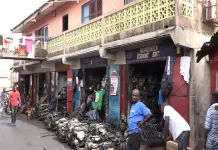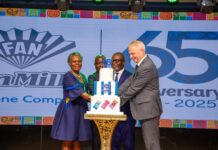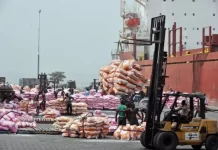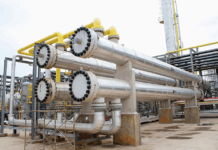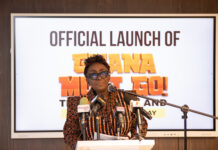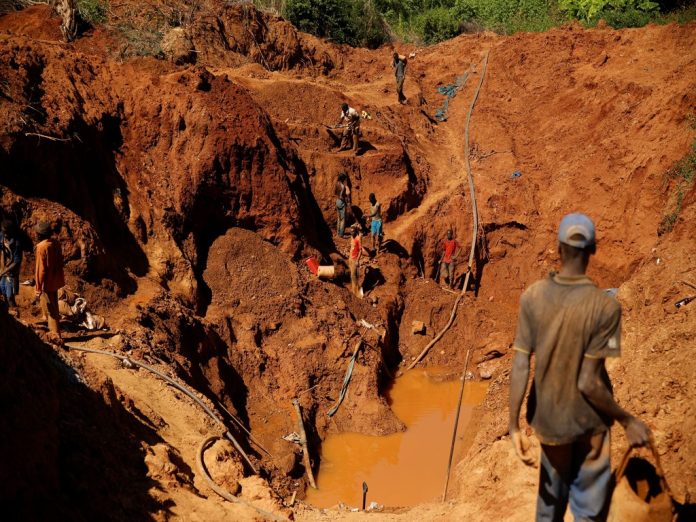
By Dr. Felix Dela Klutse
Ghana harbours Africa’s second largest mineral reserves of gold, diamonds, manganese, and bauxites. Unfortunately, the mineral-rich country only retains the environmental burden of mining as the legacy of mining in Ghana is generally that of large unfilled holes and abandoned artisanal mining sites. Poisonous chemicals such as mercury and cyanide used by the small-scale illegal miners continue to pose a serious threat to humans, fish, forest reserves and other aquatic species.

History of Mining Activities in Ghana
Classically, mining activities in Ghana, located in West Africa, accounts for about 9.1% of Ghana’s gross domestic products (GDP) and serves as a source of employment for about 260, 662 citizens in the formal sector.
Gold extraction activities in Ghana started as far back as the seventh centuries as gold deposits attracted Arab traders into the country. These activities were strategically located along rivers where sediments believed to contain deposits of gold were washed constantly to separate the gold grains.
Although Ghana’s economy was predominantly agriculture-based, many illegal miners flourished and depended on the mining and smuggling of the country’s minerals for sale outside the country for their livelihood. These individuals sought mainly to further their own economic gain without considering the adverse social or environmental impacts of their actions.
According to Minerals Commission of Ghana, about 500,000 Ghanaian artisanal miners work without an official license and have contributed about $ 461.1 million to Ghana’s economy since 1989. It is, therefore, not surprising that Ghana also has the largest artisanal and small-scale mining in Africa (1,100,000 small-scale miners) with estimated dependents of 4,400,000.
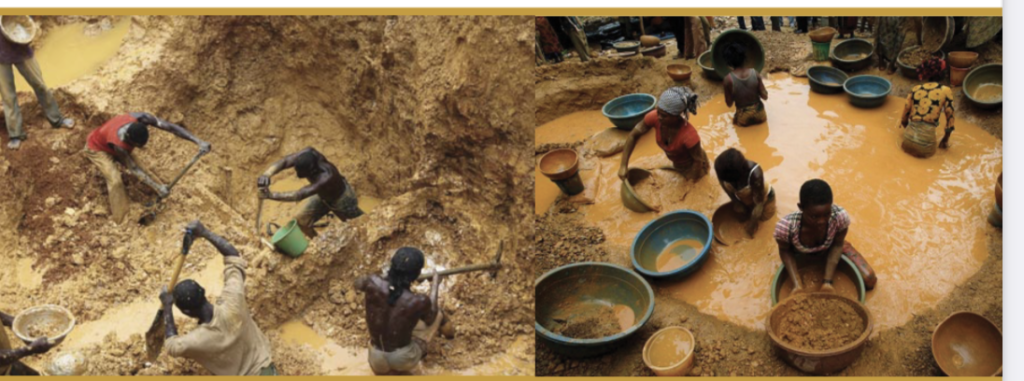
Who are the Illegal Miners?
Illegal mining activities is popularly known in Ghana as “Galamsey.” The name came from the phrase “gather them and sell.” The Ghana Small-Scale Gold Mining Act of 1989 implemented a system for obtaining small-scale mining licenses. In 2006, an updated law stipulated that only Ghanaian citizens could receive mining licenses and required permits from the country’s Environmental Protection Agency and Forestry Commission.
Although some small-scale mining operations therefore do have legal permits, many of them don’t, and many partake in illegal activities such as employing foreigners or crews of hundreds, using mercury, or heavy machinery. Most artisanal miners have elected to remain unregistered because governments have created procedurally complex regulatory environments and have failed to provide adequate on-site support and extension services.
The methods of mining by the illegal miners have contributed to erosion, sinkholes, loss of biodiversity, and contamination of soil, groundwater, and surface water. The illegal miners are also using toxic chemicals and heavy metals to process the minerals. Some of the known chemicals include cyanide, mercury, sulfuric acid and lead. Due to the chemical pollutants linked to galamsey, many waterways have morphed in colour to a gold, leaving limited supplies of potable water to farms and village locals.
In Ghana, illegal small-scale miners in the past were described as “poor people,” who use rudimentary tools and techniques such as picks, chisels, sluices and pans to exploit mineral deposits. This definition does not hold any longer in Ghana and specifically in the mining communities where this investigation was conducted.
They now use sophisticated mining equipment and had caused massive destruction to the environment including that of the Ghana-Burkina Faso border and posed a major threat to wildlife in Ghana’s western border with Cote d’Ivoire, a habitat that hosts the Mole National Park in Ghana.

Water Pollution
The threat posed by illegal mining activities to the quality of water resources in Ghana has become a major public concern due to the closing down of some water treatment plants in the country.
In March 2017, the Ghana Water Company warned that the spate of water pollution by illegal small-scale miners is approaching alarming levels and that the country risks importing water for consumption by 2025 unless illegal mining activities are curbed.
There are four main types of mining impacts on water quality: acid mine drainage, heavy metal contamination and leaching, processing chemicals pollution and erosion and sedimentation. Water has been called “mining’s most common victim in Ghana.
These chemicals, according to the Ghana’s Environmental Protection Agency, resulted in sewage with high acid levels which flow into surface water bodies and thereby posing danger to the nearby communities, especially those which depend on such water bodies for drinking and other domestic purposes.
Another concern has to do with the leakage of heavy metal oxides including lead and zinc oxides, which sometimes find their way into the environment and more specifically seep into surface and underground water bodies, posing danger to aquatic life, as well as communities which depend on such resources.
In Fenaso Community for instance, Business Day’s investigation revealed that illegal mining activities are controlled by the rich (70 per cent Chinese), who employ the use of sophisticated equipment resulting in modifying the landscapes and potentially having a long-term impact on community and the natural resources due to their physical degrading nature, as well as the use of chemicals and other harmful substances.
For the past 30 years, Fenaso town has seen increasingly rapid advances in illegal mining popularly with very sophisticated and complex equipment. This has created many challenges to Fena River, a drinking water body for the people in the Fenaso area. The first challenge is the diversion of the river path and mining on the river bed, resulting in a high level of siltation that threatens the drying up of the river.
“The concentrations of mercury found in fish in the Fena River were three times higher than levels deemed safe,” the United States Environmental Protection Agency has stated in its 2020 Research Report, adding that, five tonnes of mercury is released from illegal small-scale mining operations in Ghana each year.
“These challenges pose a serious threat to public health in Fenaso and its environs, especially for those who still depend on the river for domestic activities such as cooking during water stress conditions,” Dr. Amoako Atta, Head of the Renal Unit of the Komfo Anokye Teaching Hospital in Ghana has stated.
He continued: “there is an increase in cases of kidney disease and the use of mercury by illegal miners is a contributory factor.”
Apart from Fenaso Community, Business Day’s investigations revealed that the water bodies in the Obuasi Municipality have also been greatly compromised. Most streams, rivers, and other water bodies in the area, where gold was mined over 100 years ago, are either polluted with chemicals or dried up.
Johnson Yeboah, an agricultural extension officer in the area said, there are no fishing activities in the Kwabrafo River as all fish species have died off due to toxification.

Business Day also observed that the rivers in the area are opaque brown in colour, and according to Yeboah, “this was not the case in the past.” Some of the inhabitants around the rivers claimed that in the years before illegal mining activities, farmers used to drink the river water directly without treatment, due to the clear colour of the water.
Furthermore, rivers such as Pra, Ankobra, and Birim which communities along these stretches of the river depend upon are extremely polluted and local communities can no longer rely on them. The activities of illegal miners affect water quality and increase the cost of water treatment for water companies that treat the water for public consumption.

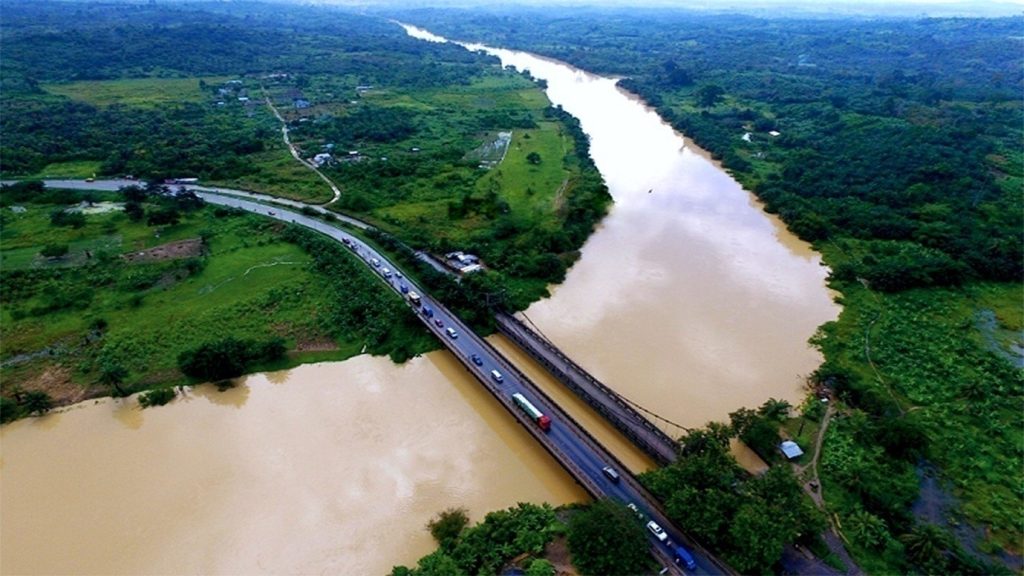

Loss of agricultural land and deforestation
Ghana is a multi-party democratic country located on West Africa’s Gulf of Guinea, where it has a tropical climate that exhibits both wet and dry seasons. It is a nation known for its diverse wildlife, old forts, and diverse ecology. The nation’s economy largely depends on cocoa bean farms as it is the world’s second-largest producer and exporter of cocoa beans. Approximately, 25% of the worlds cocoa supply originates in Ghana.
It is sad to note that within five years, illegal mining had degraded 2.5 km2 (4.4%) of the total area of Ghana’s reserve and the destruction of cocoa farms and water sources. Several hectares of fertile forestlands across the country have been destroyed due to the activities of illegal miners, especially within the last decade. The Desiri, Kutukrom, Kobro, Oda, Jimira, Atewa, and Tano-Offin forests in the Ahafo, Western, Ashanti, Eastern regions have all suffered from the illegality.
From the country’s original forest cover of 8.2 million hectares at the beginning of the 20th century, only an estimated 1.6 million hectares remain. The deforestation rate is 2.0% leading to an annual loss of around 135.000 hectares, according to Ghana’s Ministry of Lands and Natural Resources.
Solomon Opoku-Ware, an Assembly Member of Kenyasi Community told Business Day that illegal mining activities had led to a complete change of landform suitable for agricultural and any other livelihood activity.
Ms. Reta Agorsor, a cocoa farmer in the east of Ghana, lost more than 500 cocoa trees in one fell swoop. One of her smallholder farms was destroyed when an excavator on the hunt for gold left unsightly and dangerous piles of soft clay and deep pits throughout the once fertile land. It also wiped out her family’s sense of financial stability.
“Galamsey will give you money now, but it won’t last as the cocoa trees and farms will always be there,” Agorsor, 31 years old, explained from her home in Akyem Adukrom community, a lush, rainforest-covered area of Ghana. Cocoa is big business for this West African nation, supporting about one million households like Agorsor’s. Ghana is the world’s second-largest producer and exporter of cocoa beans, accounting for up to 25 percent of global cocoa supply. Currently, the cocoa industry contributes around seven percent of gross domestic product and up to one quarter of the country’s export earnings. But the industry is under threat as small-scale illegal gold mining, which began booming five years ago when gold prices were escalating, wipes out cocoa farms.
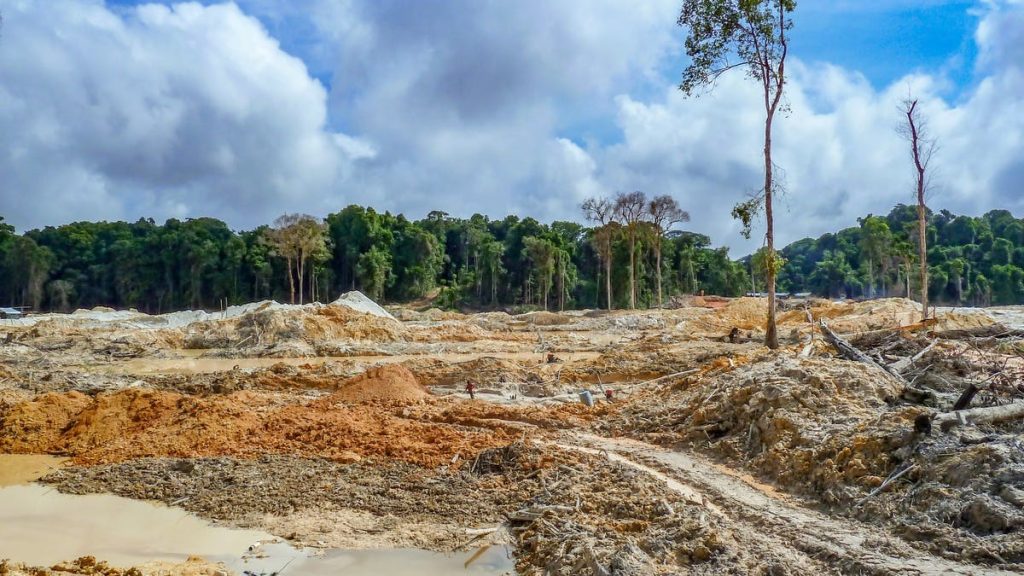
Air Pollution
Opoku-Ware told Business Day that air pollution in the Kenyasi community mainly comes from the dusty untarred roads that are continually used by illegal miner’s heavy-duty vehicles for transporting machines and other equipment to the mine sites.
“Chemical gases, fumes and smoke are not readily visible at the mining site, but during blasting, dust fills the atmosphere for some time. Chemicals used in the blasting process are also released into the atmosphere,” Opoku-Ware continued, stressing that the situation can be linked to increased respiratory ailments such as flu and cold as reported by most residents.
Noise Pollution
The nuisance noise pollution creates for people in the mining communities have drawn the attention of local authorities. Currently, noise pollution standards are set for most companies that use heavy equipment and the noise emission levels of machinery are constantly assessed.
Noise pollution in the mining communities is mainly attributable to blasting at the mining sites and this noise is so great that building foundations in places like Kenyasi for instance are continually shaken and one can easily see cracks on most buildings in the community.
Noise from heavy duty trucks belonging to the miners is another major source of noise pollution in Kenyasi Community and residents complained that these heavy trucks are destroying the few tarred roads in the area and the noise they make when passing through the community is a source of annoyance.
A study of 252 miners by Ghana’s Ministry of Lands and Natural Resources in Ghana in 2018 had revealed that 23% of them had noise-induced hearing loss. A specific study in mining sites revealed that three out of the five companies in the study recorded a mean hearing threshold level of more than 25 decibels.
Analysis by the Ministry of Lands and Natural Resources of the extent of the hearing loss among the respondents with hearing threshold level more than 25 decibels indicated that 75%, 18%, 5%, and 2% had mild, moderate, moderately severe and severe hearing loss respectively.
Policy Challenges
Business Day’s investigations revealed that three key political issues are especially crucial the fight against the menace: the nature of electioneering campaigns, the network of powerful actors engaged in this phenomenon and the challenge this poses for the effective enforcement of anti-illegal mining laws.
The illegal mining discourse has taken an increasingly partisan character in which opposition parties often bolster the position of illegal miners to make those in power unpopular and gain partisan political advantage. The two dominant parties are especially guilty of this problem. In late 2006, the NPP government-initiated Operation ‘Flush-Out’ – a military ‘sweep’ against illegal miners that resulted in the confiscation and destruction of the equipment of illegal mining operators.
This operation formed an important part of the campaign message of the then opposition NDC which campaigned on a platform that was sympathetic to illegal small-scale miners. The late Professor John Atta Mills, NDC presidential candidate in 2008, reportedly asked why the NPP was treating g illegal mining operators as if they were ‘not Ghanaians’.
Once Atta Mills won the 2008 elections, his government came under intense pressure from the illegal small-scale miners to make good on his promises to provide greater support for the sector.
Just as the NDC did in 2008, the then opposition NPP’s campaign strategy for the 2016 elections was couched in a language that pointed to its support for galamsey. The party’s presidential candidate, now President Akufo Addo reportedly drew his supporters’ attention to how the NDC government “directed Soldiers to come and drive out all persons involved in galamsey”.
“It is these types of election favour pronouncements that provided grounds for galamsey operators” Dr. Abdul-Gafaru Abdulai, a Senior Lecturer at the University of Ghana Business School, told Business Day Media.
Government’s interventions
Late last year, Ghana’s President Nana Akufo-Addo, said the fight to stop the illegal practice was so important and that he would put his presidency on the line to combat it, vowing to stop galamsey even if it turns voters against his government.
Throughout 2020, a military team was deployed by the Ghana Government to destroy mining equipment allegedly belonging to illegal miners who have invaded forest reserves also polluted water bodies in the country.
The Ghanaian Authorities strongly believe Chinese nationals have a part to play in the illegal hunt for gold. In November last year, around 4,500 nationals from China, one of Ghana’s largest trading partners, were deported as part of a crackdown on illegal miners.
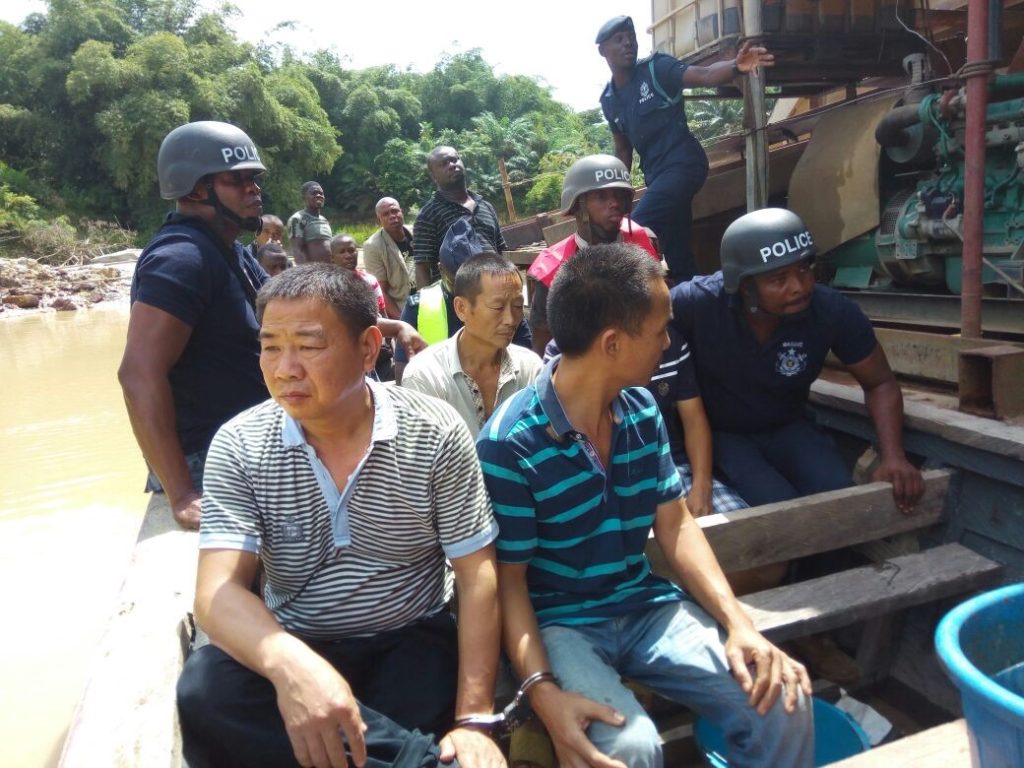
The way-forward
To address the concerns, the Ghanaian government last year implemented a temporary ban on all small-scale mining in Ghana, legal and illegal. Derrick Kumi, an illegal small-scale miner at Obuasi community recommended the following to curb the environmental posed by mining in Ghana. Firstly, he called for collaboration among governmental agencies, adding that, there was the need for an integrated approach involving all relevant stakeholders to address the multifaceted challenges confronting the mining sector.
He said there was the need for small-scale miners to form associations that interact regularly with all stakeholders in the mining sector. This, according to him, should involve representatives from each traditional council in the municipality. He further proposed that the various assemblies must provide alternative sources of treated drinking water for the affected communities.
“In addition, miners should be prevented from mining close to water bodies to avoid further pollution of nearby rivers,” he stated. This, according to him, entails strict implementation of the mining laws to ensure that proper mining procedures are adhered to.
“In this context, any successful anti-galamsey crusade would depend on the demonstration of sustained top-down elite commitment at the highest levels of government,” he advised.


